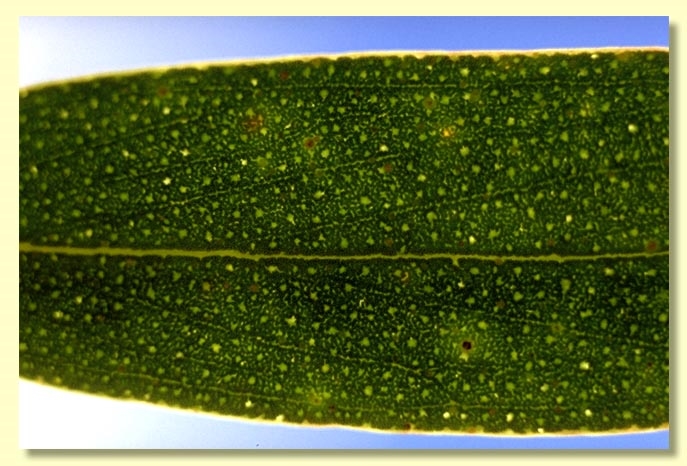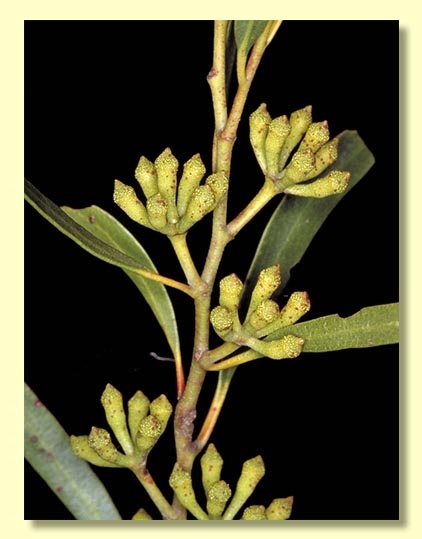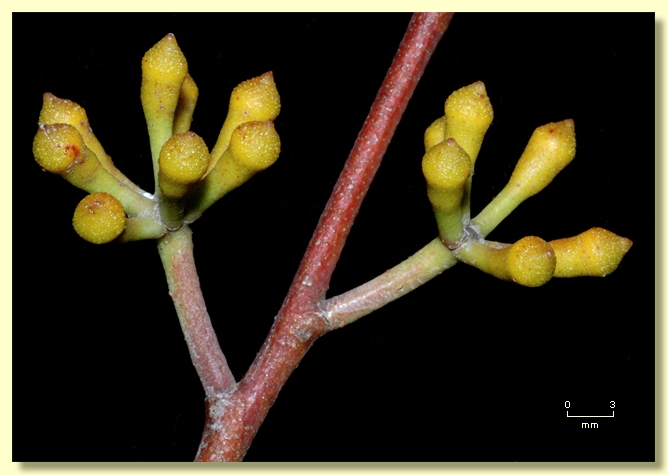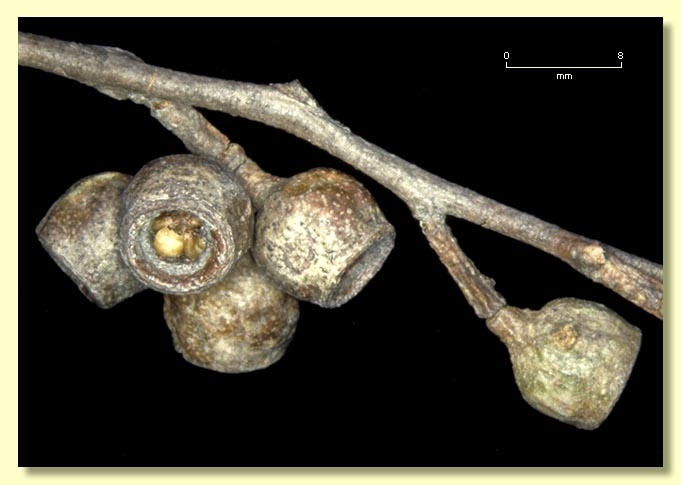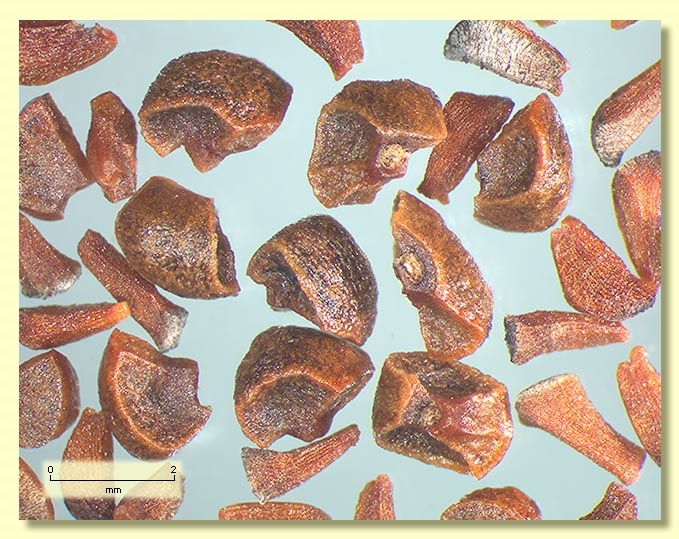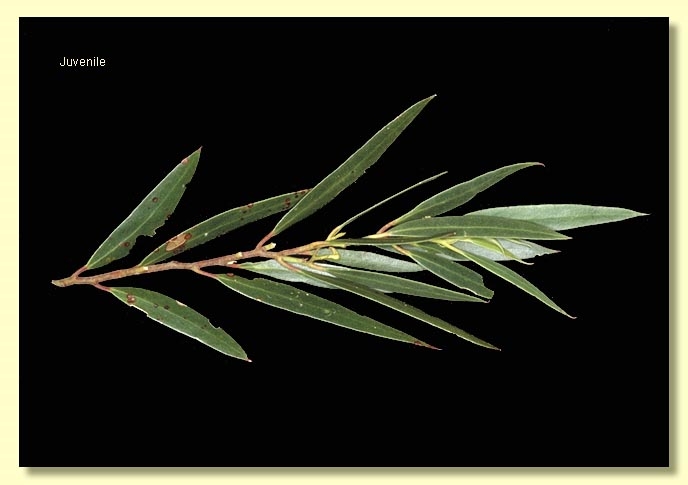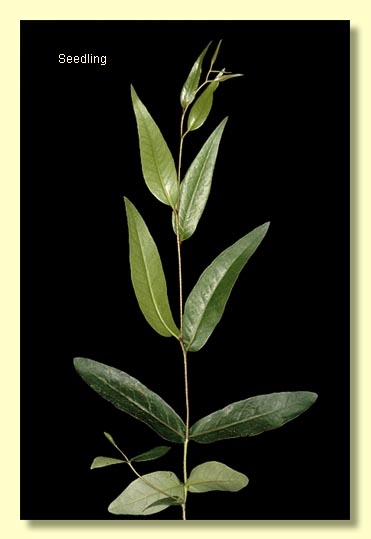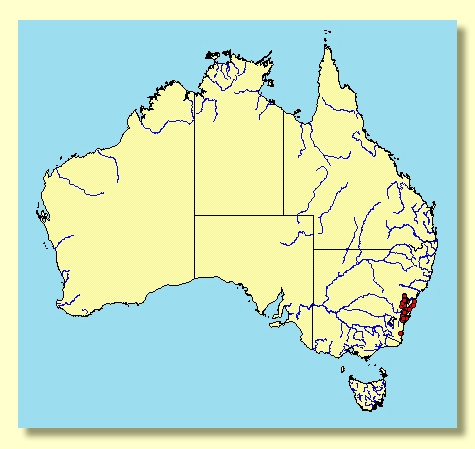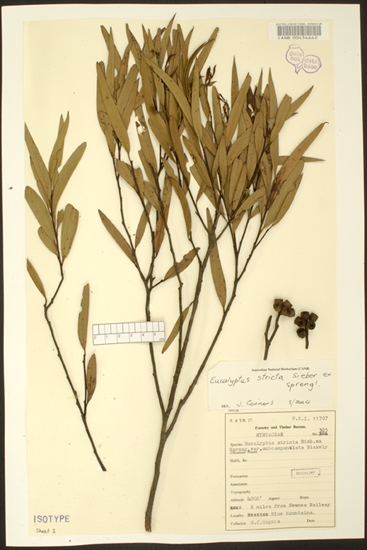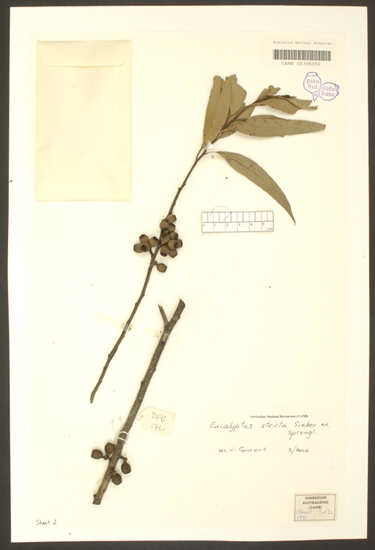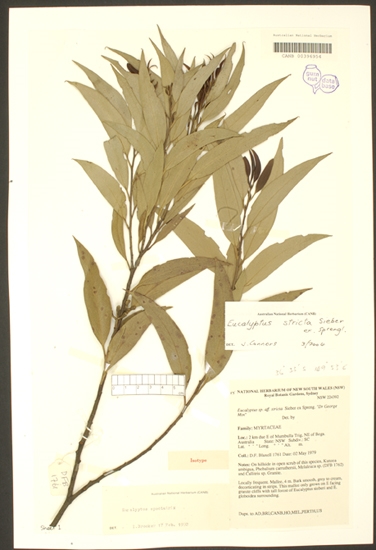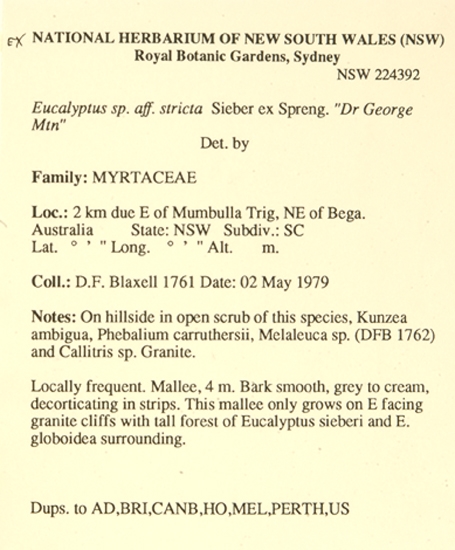Euclid - Online edition
Eucalyptus stricta
Eucalyptus | Eucalyptus | Eucalyptus | Strictae | Irregulares
Bark smooth, mottled pale grey, brown, white and pink, often with scribbles, at times with ribbons of decorticated bark in the upper branches.
Juvenile growth (coppice or field seedlings to 50 cm): stem rounded in cross-section, usually non-glaucous, warty; juvenile leaves opposite and sessile for ca 4 or 5 nodes then alternate, lanceolate, 7–14 cm long, 1.5–3.5 cm wide, base tapering to petiole, concolorous, glossy, green.
Adult leaves alternate, petiole 0.5–1.7 cm long; blade linear to lanceolate, 6–11 cm long, 0.6–1.6 cm wide, base usually tapering to petiole, concolorous, glossy, green, side-veins acute or obscure, reticulation absent or sparse, intramarginal vein parallel to and just within margin or well removed from margin, oil glands irregular, island.
Inflorescence axillary unbranched, peduncles 0.5–1.3 cm long, buds 7 per umbel, rarely more, pedicels 0.2–0.7 cm long. Mature buds obovoid to pyriform, 0.6–0.9 cm long, 0.4–0.5 cm wide, green, warty, scar absent, operculum conical to rounded and apiculate, stamens irregularly flexed, anthers reniform to cordate, versatile, dorsifixed, dehiscing by confluent slits, style long, stigma tapered, locules usually 4, the placentae each with 2 vertical ovule rows. Flowers white.
Fruit on pedicels 0.1–0.7 cm long, urceolate to barrel-shaped, 0.6–1 cm long, 0.6–1.1 cm wide, disc descending, valves 4, enclosed or near rim level.
Seeds brown, 1.5–2 mm long, pyramidal or obliquely pyramidal, dorsal surface smooth, hilum terminal.
Cultivated seedlings (measured at ca node 10): cotyledons reniform; stems rounded in cross-section, scabrid to warty on lower stem; leaves sessile, opposite, discolorous and elliptical for 4 or 5 nodes then becoming alternate, petiolate, lanceolate, 6–16 cm long, 1.7–4 cm wide, base rounded to tapering, apex finely pointed, becoming concolorous, glossy, green.
Flowering has been recorded in January, February, March, April, June, August, September and December.
A mallee endemic to New South Wales, of scattered distribution from the Central Tablelands south to Dr George Mountain north-east of Bega, usually on poorly drained sandy soils. E. stricta is one of several green-leaved mallee ashes and may be considered part of a series from the narrowest-leaved, E. apiculata (leaves 0.3 to 0.7 cm wide) through E. stricta (leaves 0.6 to 1.6 cm wide) to the broader-leaved E. burgessiana (leaves 1.3 to 2.5 cm wide) and E. langleyi (leaves 1.8 to 5 cm wide). The latter species is much coarser than the others and is notable for the strongly angled branchlets.
Eucalyptus stricta belongs in Eucalyptus subgenus Eucalyptus section Eucalyptus series Strictae, because of a combination of characters: mallee habit with smooth bark, alternate, green juvenile leaves, adult leaves held erect and with acute side-veins and little or no visible reticulation, single axillary inflorescences, the buds in clusters of sevens, with buds having only one operculum and reniform anthers, ovules in two rows, and more or less pyramidal seeds. Within series Strictae, E. stricta is one of six closely related species all with leaf oil glands that are irregular in outline (subseries Irregulares), the others being E. dendromorpha, a partly rough-barked tree with clavate buds in sevens; E. triflora, a small tree with smooth bark or a shortv stocking of hard blackish rough bark and with oblong buds in threes (rarely sevens); E. apiculata, E. burgessiana and E. langleyi, which differ as described above.
The cliff-dwelling Blue Mountains shrubby species E. cunninghamii differs from E. stricta in having a blueish green crown of narrow linear leaves only 0.3-0.8 cm wide, and with round (not irregular) oil glands, and has smaller buds and fruit.
Eucalyptus spectatrix described by Johnson & Blaxell (1991) from sporadic populations in the Bemboka and Bermagui areas differs from E. stricta but slightly, having adult leaves that are slightly wider; however, the adult leaf length, bud, fruit and juvenile leaves show considerable overlap in dimensions. E. spectatrix is therefore placed in synonymy with E. stricta. Two other species also described in 1991, E. obstans and E. laophila are synonymized under E. burgessiana and E. apiculata respectively.



